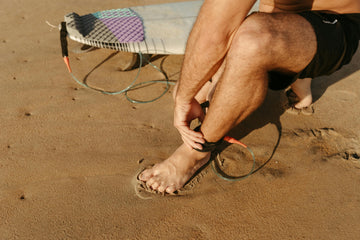Ankle pain is a common ailment that can significantly impact one's daily life. Whether the discomfort stems from an injury, overuse, or an underlying medical condition, finding effective ways to deal with ankle pain is crucial for maintaining mobility and overall well-being. In this article, we will explore various strategies to alleviate and manage ankle pain.
Understanding the Causes: Before diving into coping mechanisms, it's essential to understand the potential causes of ankle pain. Common triggers include sprains, strains, fractures, tendonitis, arthritis, and overuse injuries. Identifying the root cause helps tailor your approach to managing pain effectively.
Immediate Care: If your ankle pain is the result of a recent injury, immediate care is crucial. Remember the R.I.C.E. method:
-
Rest: Give your ankle time to heal by avoiding activities that exacerbate the pain.
-
Ice: Apply ice to the affected area for 15-20 minutes every 2-3 hours during the initial 48 hours to reduce swelling.
-
Compression: Use a compression bandage to minimize swelling and provide support.
-
Elevation: Keep your ankle elevated above heart level to reduce swelling.
Pain Relief Medications: Over-the-counter pain relievers, such as ibuprofen or acetaminophen, can help manage pain and reduce inflammation. However, it's crucial to follow the recommended dosage and consult a healthcare professional if the pain persists.
Physical Therapy: Engaging in targeted exercises under the guidance of a physical therapist can strengthen the muscles around the ankle, improve flexibility, and promote overall stability. A customized exercise plan can speed up the recovery process and prevent future injuries.
Supportive Footwear: Wearing proper footwear is vital for ankle health. Choose shoes that provide adequate support, cushioning, and stability. Consider orthotic inserts if additional arch support is needed. High heels and poorly fitted shoes can exacerbate ankle pain, so opt for comfort and functionality.
Ankle Braces and Supports: Ankle braces and supports can provide additional stability and compression, aiding in the healing process. They are particularly beneficial during physical activities or when returning to sports after an injury. Consult with a healthcare professional to determine the most suitable brace for your condition.
Weight Management: Maintaining a healthy weight is essential for reducing stress on the joints, including the ankles. Excess weight can contribute to chronic pain and slow down the healing process. Adopting a balanced diet and regular exercise routine can help manage weight and support overall joint health.
Alternative Therapies: Explore alternative therapies such as acupuncture, massage, or chiropractic care. While scientific evidence varies, some individuals find relief from ankle pain through these complementary approaches. Always consult with a healthcare provider before starting any alternative treatment.
Restoration of Range of Motion: Perform gentle ankle exercises to restore range of motion. Circular motions, alphabet exercises, and gentle stretches can help maintain flexibility and prevent stiffness.
When to Seek Professional Help: Persistent or worsening ankle pain may require professional evaluation. If the pain is severe, accompanied by swelling or deformity, or if you are unable to put weight on your ankle, consult a healthcare professional promptly. Diagnostic tools like X-rays or MRI scans may be necessary to identify underlying issues.
Dealing with ankle pain involves a comprehensive approach that addresses the root cause, promotes healing, and enhances overall ankle health. From immediate care measures to long-term strategies, individuals can take proactive steps to manage pain, regain mobility, and prevent future issues. Always consult with a healthcare professional for personalized advice tailored to your specific condition.


